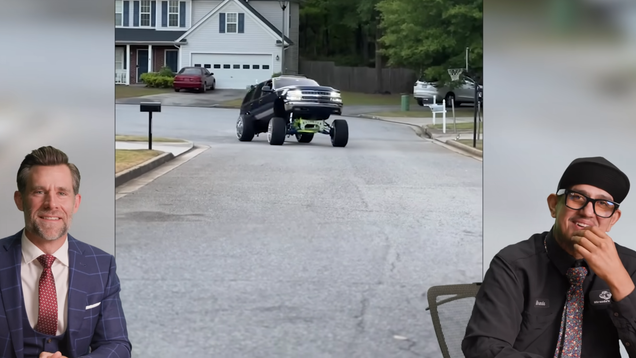Exploring the Legal Landscape of Vehicle Modifications
The world of automotive modifications is a vibrant and often contentious space where creativity meets legality. With the rise of social media platforms like YouTube, enthusiasts and experts alike are sharing their insights on vehicle modifications, leading to a greater public interest in what is permissible and what crosses the line into illegality. This article delves into the complex interplay between vehicle modifications, legal considerations, and the perspectives of both mechanics and legal experts.
Understanding Vehicle Modifications
Vehicle modifications encompass a wide range of alterations made to a car or motorcycle, from aesthetic changes like custom paint jobs to performance enhancements such as turbochargers and suspension upgrades. While many modifications are harmless and can even improve a vehicle’s performance, others may violate local laws or regulations, leading to potential legal repercussions for the owner.
Recent discussions among automotive experts highlight the need for clarity in the legal framework surrounding vehicle modifications. For instance, a YouTube mechanic and a legal expert recently collaborated to analyze various popular modifications, shedding light on their legality. Their findings underscore the importance of understanding local laws, which can vary significantly from one jurisdiction to another.
What Makes a Modification Legal or Illegal?
The legality of vehicle modifications typically hinges on several factors, including safety, emissions standards, and compliance with local vehicle codes. For example, modifications that alter a vehicle’s emissions system may violate environmental regulations, leading to fines or the inability to pass emissions tests. Similarly, modifications that affect a vehicle’s safety features—such as altering suspension systems or removing airbags—can render a vehicle illegal for road use.
In some regions, specific modifications are outright banned. For instance, modifications that raise a vehicle’s height excessively, often referred to as “lift kits,” can lead to safety concerns and are subject to strict regulations. Conversely, modifications that enhance visibility, such as upgraded headlights, may be permissible as long as they meet certain standards.
The Role of Expert Opinions
The collaboration between mechanics and legal experts provides valuable insights for vehicle owners considering modifications. Mechanics can offer practical advice on how modifications may affect a vehicle’s performance and safety, while legal experts can clarify the potential legal ramifications. This interdisciplinary approach helps enthusiasts make informed decisions, balancing their desire for personalization with the need to comply with the law.
For example, a mechanic might suggest that a particular performance enhancement could void a vehicle’s warranty, while a lawyer could explain how such modifications might lead to legal challenges if the vehicle is involved in an accident. This kind of knowledge is essential for anyone looking to modify their vehicle responsibly.
Case Studies: Real-World Implications
Several case studies illustrate the real-world implications of vehicle modifications. In one notable instance, a driver modified their vehicle with an aftermarket exhaust system that significantly increased noise levels. While the driver enjoyed the enhanced sound, they soon faced fines for violating local noise ordinances. This case highlights the importance of understanding not just vehicle performance but also how modifications can impact compliance with community standards.
Another example involves a popular trend among car enthusiasts: the installation of neon underglow lights. While visually striking, these modifications can lead to legal issues in many areas where such lighting is prohibited. Drivers have found themselves pulled over and fined, prompting discussions about the need for clearer regulations regarding aesthetic modifications.
Navigating the Legal Maze
For vehicle owners, navigating the legal landscape of modifications requires diligence and research. Here are some actionable steps to ensure compliance:
1. **Consult Local Regulations**: Before making any modifications, check local laws and regulations regarding vehicle alterations. Many municipalities have specific codes that outline what is permissible.
2. **Seek Professional Advice**: Engage with both mechanics and legal experts to understand the implications of your desired modifications. This dual approach can help you avoid costly mistakes.
3. **Document Modifications**: Keep detailed records of any modifications made, including receipts and installation details. This documentation can be invaluable in case of legal disputes or insurance claims.
4. **Stay Informed**: Laws and regulations regarding vehicle modifications can change. Stay updated on local legislation and industry trends to ensure ongoing compliance.
The Future of Vehicle Modifications
As the automotive landscape continues to evolve, so too will the legal frameworks governing vehicle modifications. With the increasing popularity of electric vehicles and advanced technology, new types of modifications will emerge, prompting fresh legal considerations. Enthusiasts and industry stakeholders must remain vigilant and proactive in understanding these changes to navigate the future of vehicle modifications successfully.
In summary, the intersection of automotive creativity and legal compliance is a dynamic and complex arena. By fostering collaboration between mechanics and legal experts, vehicle owners can enjoy the benefits of personalization while adhering to the necessary legal standards. This balanced approach not only enhances the enjoyment of vehicle ownership but also promotes safety and responsibility on the roads.

